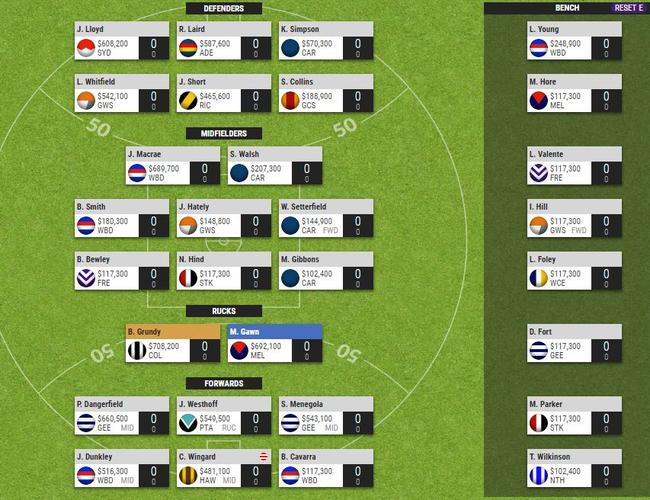Six selection strategies you can use to build a winning SuperCoach team
There is more than one way to win in SuperCoach, especially this year. Do you go with the trusted ‘guns and rookies’ approach, stack the backline or gamble in the ruck? Here are six options that could deliver SuperCoach glory. SAMPLE TEAMS
Supercoach
Don't miss out on the headlines from Supercoach. Followed categories will be added to My News.
AFL coaches love to talk about “structures” and in SuperCoach it’s no different.
If you’re serious about taking out your office premiership, you need a plan before you start the recruiting process.
In the AFL there is more than one winning strategy, and the same applies to SuperCoach.
Here’s a run-down of six selection strategies you could employ this year.
GURU: GARY BUCKENARA’S TOP SUPERCOACH ROOKIES
PHANTOM: MIDFIELDERS TO WATCH IN JLT SERIES
WHISPERS: NEW ROLE PUTS DOCKER ON WATCH LIST
1. GUNS AND ROOKIES
A popular strategy with long-time SuperCoach players based on picking exclusively high-scoring stars and cheap players with scoring potential.
The idea is simple — when building your squad, pick one gun (priced over $500,000) then one rookie (priced under $210,000) through all the lines (defence, midfield, rucks, forwards) until you run out of money to pick any more premium players. Then fill the remaining spots with rookies.
PROS
— This strategy allows you to pick more premiums than any other. The sample squad below features 13 SuperCoach A-graders who you can bank on for big scores every week.
— Information on newly recruited AFL players becomes more detailed every year. With just a little bit of research SuperCoaches can quite successfully select rookies who will play and increase in value. They can then traded for more established stars during the season.
— Avoids the risks associated with picking mid-priced players.
JOIN THE COMMUNITY: LIKE SUPERCOACH ON FACEBOOK
CONS
— You get more premiums but also more rookies on the field who can deliver regular low scores.
— Most rookie-priced players are unknown quantities. Just because they are named in Round 1 doesn’t mean they are safe in a team’s best 22. Remember Relton Roberts?
— We remember the big rookie scores but 40s and 50s are much more common from first-year players. You can lessen the risk by picking as many mature-aged rookies as possible and starting some of the higher-priced rookies who traditionally have better job security.
SAMPLE TEAM

2. MID-PRICE MADNESS
A team based around a core of mid-price players allows you to spread your risk and get maximum value out of players underpriced at the start of the season.
Generally, a mid-price player is valued from $215,000-$500,000. When picking one of these players SuperCoaches are looking above all for value for money.
PROS
— If you can pick the right mid-pricer in your initial team you gain a significant advantage over the rest of the pack.
— A mid-priced strategy is likely to outscore a guns and rookies team early in the season. SuperCoaches who adopt this tactic are more likely to gain valuable wins in the early stages of their leagues and keep them in the hunt for the $50,000 grand prize.
— There is a multitude of mid-price options this year especially in the midfield with the likes of Brad Crouch, Tom Liberatore and Anthony Miles all potential bargains, and stars like Dustin Martin, Zach Merrett and Matt Crouch priced well below their potential output.
BOOKMARK THIS PAGE: SUPERCOACH PRE-SEASON RESEARCH

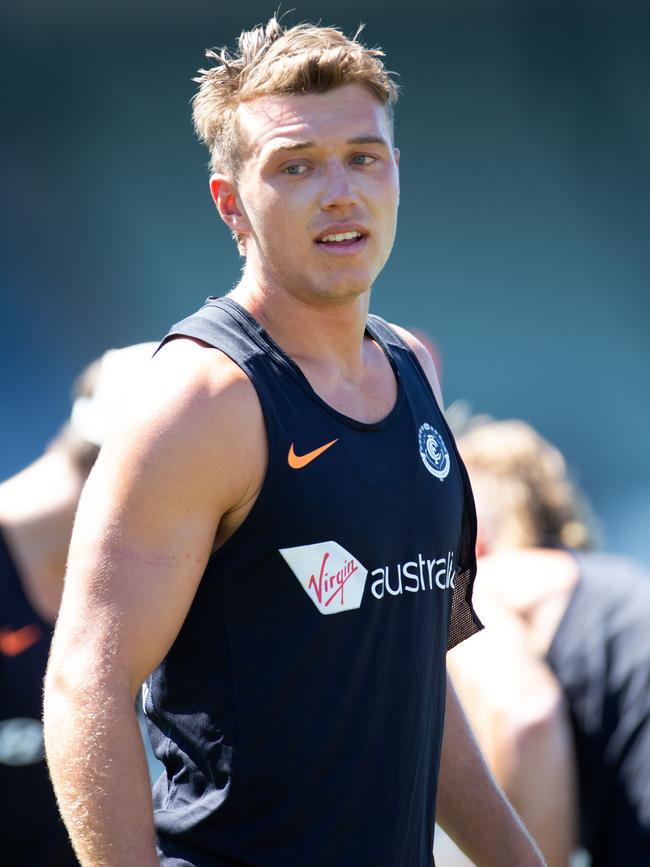
CONS
— For every Clayton Oliver who breaks out and becomes an elite scorer, there are just as many “value” selections who stagnate or even go backwards (remember David Armitage last year?). Finding that diamond in the rough isn’t as easy as many think.
— Picking fewer rookies means you could miss out on a success story like Tim Kelly, who was a must-have last year — or you can’t find a spot for him on the field.
— Trading your way out of a large number of mid-price misses can turn into a downward spiral you can’t escape all season, leading to sideways moves to other dubious selections and missing out on other trades that would improve your team.
SAMPLE TEAM
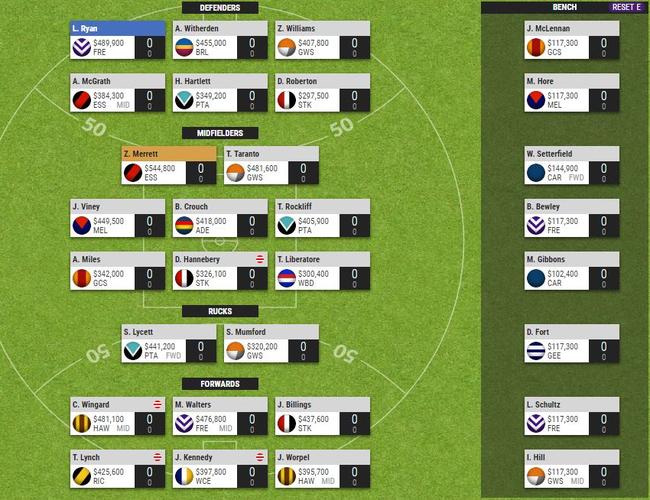
3. LOCKED AND LOADED MIDFIELD
This approach is as simple as loading up the midfield with elite and super elite players, throwing away the key and forgetting about them for the rest of the year.
PROS
— Midfielders make up most of the elite SuperCoach players. By picking as many of these elite premiums as possible in your starting squad, you maximise your midfield scoring potential over the entire season.
— Stacking your team with top-scoring players guarantees you will make a flying start to the year.
CONS
— Just as the best scoring premiums are midfielders, so too are most of the highest-scoring rookies. SuperCoaches who go with this strategy will most likely be forfeiting some of the best rookies in the competition, which will limit their team’s ability to generate cash for later trades.
— These players are also the most expensive and will leave you with a lot less money to spend in other positions. In the sample team below the midfield alone uses up more than half the $10 million salary cap, meaning you’re cutting corners (see the ruck) or taking big risks (defence and forward lines) in other parts of the ground.
— By stacking your midfield from the start you might be stuck with a player who performs below expectation and not have spots to add surprise stars like Jack Macrae and Stephen Coniglio last year, or a premium who becomes available for a bargain price.
SAMPLE TEAM
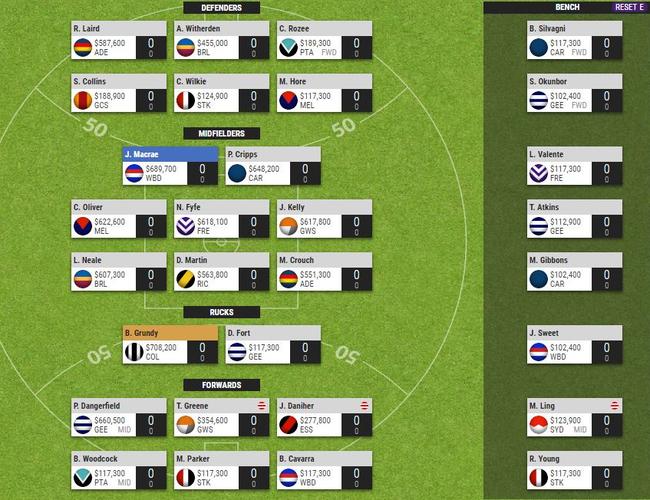
4. STACKING THE BACKLINE
Of the AFL’s nine rule changes for 2019, none is tipped to impact SuperCoach scores as much as the changes to behind kick-ins. With players no longer required to tap the ball on their boot before playing on, it’s expected defenders will run out of the square at almost every opportunity generating extra points from field kicks, which are worth more than kick-ins from the goalsquare (read this excellent analysis for more on how the rule works and who will benefit in SuperCoach).
PROS
— If the rules boost player scores as much as some experts are predicting, this is a one-off chance to take advantage of a host of underpriced defenders. Next season the new scoring will be calculated in every player’s starting price.
— The likely points boost presents potential value in mid-range selections like Alex Witherden, Jayden Short and Luke Ryan, so you might not have to break the bank to select a deep top-scoring defence.
— Backline rookie stocks don’t appear as deep as other positions this year so it lessens risk by starting fewer on the field.
CONS
— Spending big in defence slashes the budget for other positions, especially if you’re locking in Patrick Dangerfield and at least one of the two expensive ruckmen. That means exposing more rookies or risky mid-pricers in the midfield and up forward.
— The impact of the new rules is still speculation at this point. We don’t know exactly how many new points will be on offer, or who will benefit from them. Just because Kade Simpson took a lot of Carlton kick-ins last year doesn’t mean he will in 2019 — the Blues might change their strategy based on the new rules or a new player might emerge for that role.
SAMPLE TEAM
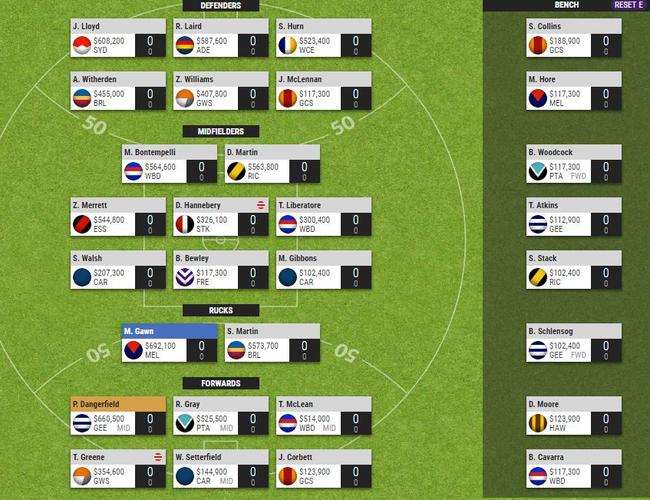
5. RUCK ROULETTE
The ruck is causing the most headaches for team selection in 2019, with SuperCoaches agonising over whether to cough up almost $1.5 million to partner Brodie Grundy and Max Gawn.
If they both score as well as last year it’s a no-brainer, but the fact is player averages are rarely that predictable, especially in the ruck where no player has backed up as the top-scorer since Dean Cox in 2009. Is anyone brave enough to gamble on two cheapies in the ruck?
PROS
— Check out that midfield! Saving about $1 million in the ruck allows you to load up on top-scorers in the middle — where historically most points are generated — and take advantage of potential scoring boost in defence. Is that enough to make up for points lost in the ruck?
— This strategy relies on finding cheap rucks who (a) will play, and (b) will score points. You will need at least two cheap ruckmen to be picked for Round 1 and have confidence they will stay in their respective sides. There are a few possibilities this year — keep a very close eye on Zac Clarke at Essendon, Darcy Fort at Geelong, Archie Smith at Brisbane, Lewis Pierce at St Kilda and Reilly O’Brien at Adelaide. New rules could encourage teams to play two ruckmen, enhancing the chances of cheapies getting a game.
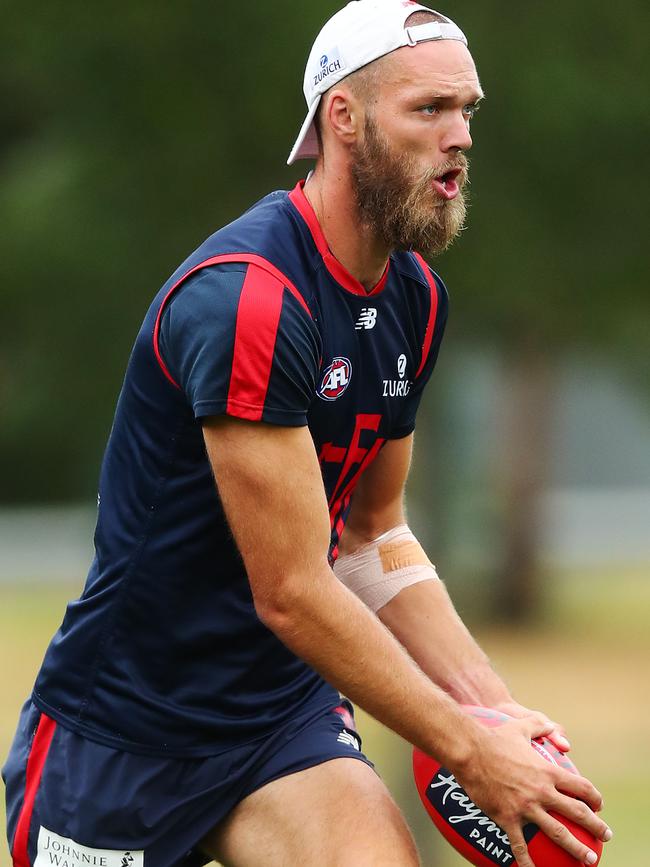
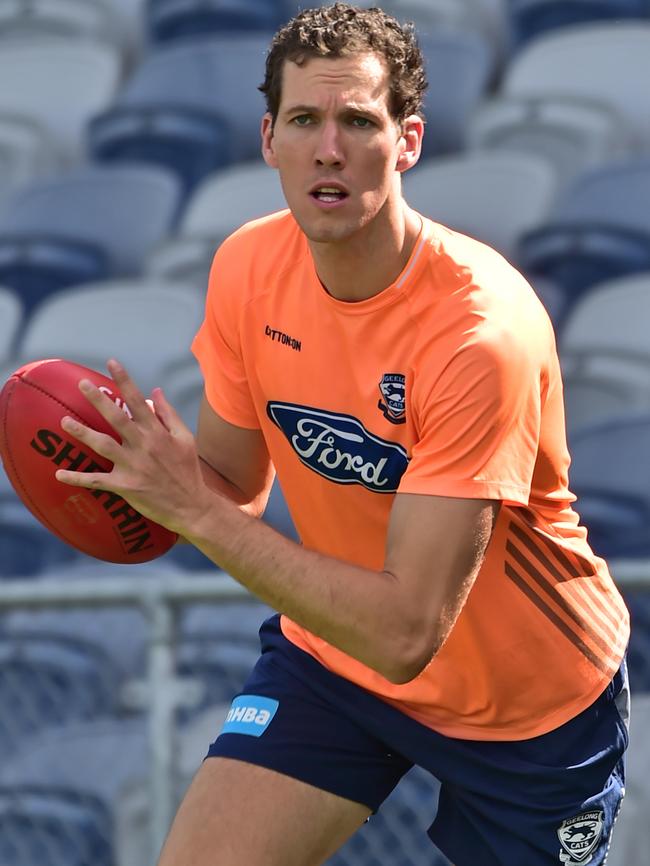
— If a cheap ruckman plays, they should score OK. The ruck is the best position for rookie point generation, because simply attending a lot of centre bounces is a safe way to get a solid points base. Remember Jonathan Giles? In more recent times Jarrod Witts started 2017 valued at $217,600 and averaged 94 for the year. It’s all about opportunity.
— If another ruck emerges as a dominant during the year — as Grundy did last season — you’ll be able to trade up to them.
— If either — or both — Grundy or Gawn slide this year, you’ll have a huge advantage
FANTASY FREAKO: SOLVING DOWN THE SUPERCOACH RUCK RIDDLE
CHAMPION DATA: SECRET TO PICKING NEXT BREAKOUT STAR
RESEARCH: ULTIMATE SUPERCOACH STUDY GUIDE
EXPERT: AL PATON’S SUPERCOACH SIDE REVEALED
CONS
— If Grundy and Gawn don’t slide, you’re in big strife. You could be giving up 120 points before the ball is bounced by starting two 80-average rucks.
— The two big rucks were also great captaincy choices last year. That points gap will only grow if you’re opponent has the C on Grundy or Gawn the week they score 150-plus (which was a lot of them).
— Job security is a major issue for cheap ruckmen. Darcy Fort is a chance to win the Geelong ruck battle for Round 1 but there’s no guarantee Chris Scott won’t try Zac Smith or Rhys Stanley the next week. What’s your back-up plan?
— If a cheap ruck fails, it’s a very deep hole to climb out of. You’ll need a lot of money in the bank to trade Fort to a playing ruckman, or be prepared to sacrifice a premium in another position.
— If you’re plan is to get Grundy and Gawn in your finished side, you’re relying on a lot of cash generation and a number of trades to get there.
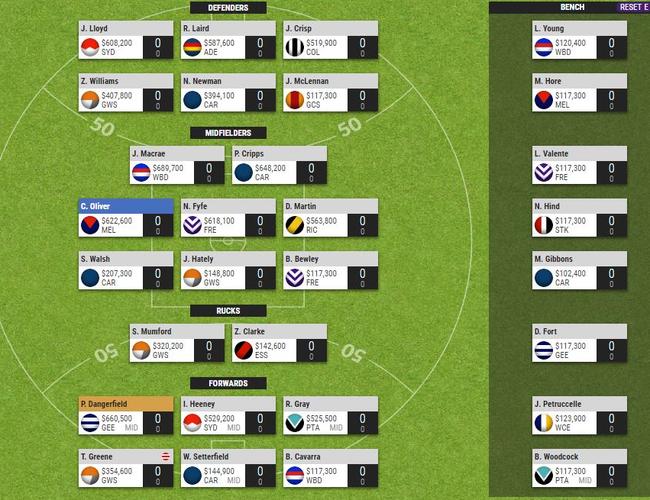
6. ROOKIE MIDFIELD MAYHEM
Instead of loading up the midfield with elite players, fill your midfield positions with rookies instead. You can then fill all your other lines with elite premiums.
PROS
— The best rookies are almost always in the midfield so it makes sense to pick a cheapie who could average 80 in the mids compared to picking a rookie in the backline that might only average 50.
— This season we are struggling to find rookies who look like reliable scorers in defence while the midfield is well stocked with promising cheap options. It makes sense to put more rookies on the field in the area with the best depth.
— By selecting so many of the higher scoring rookies, SuperCoaches who adopt this strategy will ensure fast cash generation for their sides.
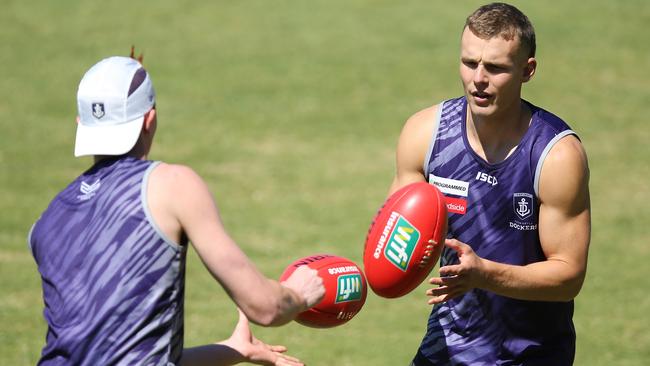
CONS
— Rookies remain dicey propositions even in the midfield, with a high chance of being rested at some stage early in the season.
— If you don’t start with the gun midfielders you will have to spend a lot to trade them in during the season. While you might get a star in defence or up forward for a bargain price, midfielders tend to hold their value and you will probably have to cough up more than $600,000 to bring the elite stars into your team.
— There is big gulf between an 80 average from a rookie and a 120 average from a super elite player. If this margin can’t be made up by your forward and defender premiums, then you might struggle early until you can upgrade those rookies.
— If you employ this strategy, make sure you select at least one super elite player in your midfield who can be your captain in the early rounds of the season. Can’t go wrong with Jack Macrae.
SAMPLE TEAM
